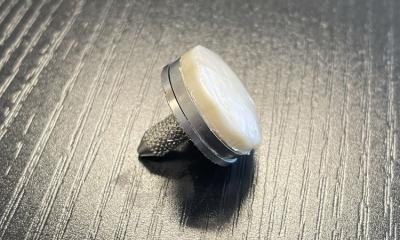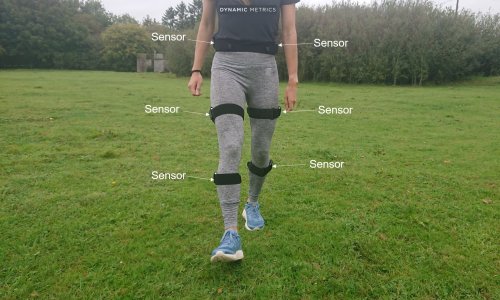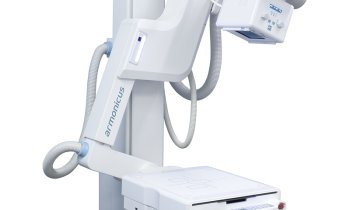Scientists aim for a self-adjusting buffer
Prosthetics and exoskeletons can cause amputees pain
UT Arlington researchers have been awarded a $744,300 grant from the Department of Defense Peer Reviewed Orthopaedic Research Program to create an adaptive interface that fits between a prosthetic and a patient’s limb so that the fit and comfort of the prosthetic are improved.

Haiying Huang, professor in the Mechanical & Aerospace Engineering Department, and Muthu Wijesundara, principal research scientist at UT Arlington’s Research Institute, are collaborating on the project. The interface will resemble an inflatable bubble wrap that will be embedded with sensors.
Huang, an expert in sensor technology, explained that four types of sensors will be used with the interface to monitor the fitting of the prosthetic device. The sensors will measure vertical movement of the limb relative to the socket wall, the pressure on the limb, the changes in the circumference of the residual limb during the day, and the water content in the tissue. ‘Eventually, we want to build the socket that can adjust automatically to the patient,’ Huang said. ‘To do that, we need the sensors to tell us when and how to adjust the socket. We plan to design a warning system first, then the sensor data will teach us how to adjust the interface automatically.’
Prosthetic users frequently experience discomfort, blistering and ulcers between their prosthetics and their residual limbs. The limb’s volume changes throughout the day. This unavoidable fluctuation changes how the limb and prosthetic socket fit together. Currently, many prosthetic users manually adjust the fitting between the prosthetics and their limbs by adding or removing socks.
Khosrow Behbehani, Dean of the College of Engineering, said this project could help anyone who uses prosthetics, including military personnel. ‘Soldiers who have been injured and have to use prosthetics every day of their lives want the most comfortable, technologically sound devices,’ he said. ‘This research works to provide the best possible prosthetic to those servicemen and servicewomen.’
According to a Congressional Research Service report, more than 1,500 American soldiers have had major limb amputations. Many of those are under 35 years old and are more likely to live active lifestyles, thereby needing a prosthetic that fits comfortably.
Specialising in medical devices for applications in tissue regeneration, wound healing, and prosthetic devices/interfaces, Wijesundara said they want an adaptable interface that can improve comfort and the fit regardless of the residual limb conditions and improve daily life for the user. ‘We want everything to adjust depending on whether the person is walking, running or simply sitting down,’ he explained. ‘This interface technology can be applied to various prosthetic devices and exoskeleton applications.’
The researchers predict that it could take three to five years to begin clinical applications of the device.
10.11.2014











